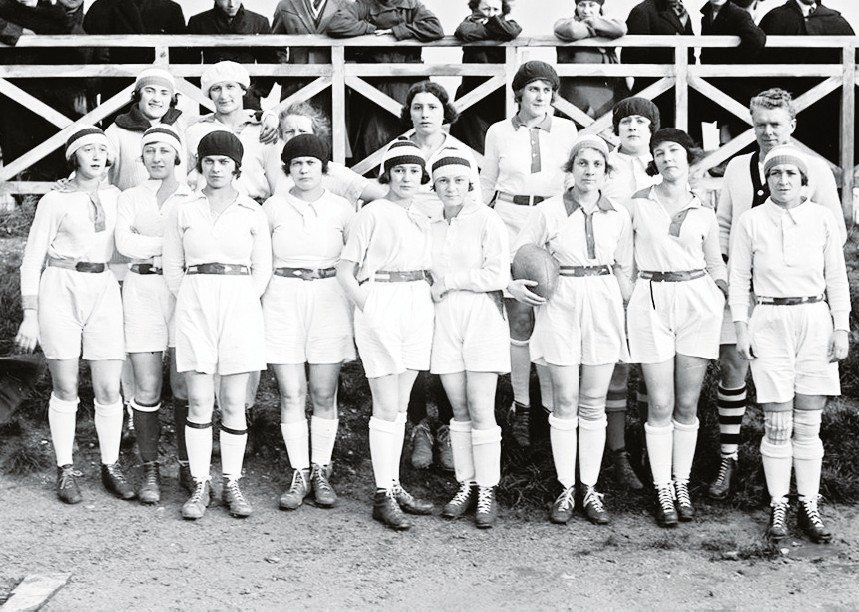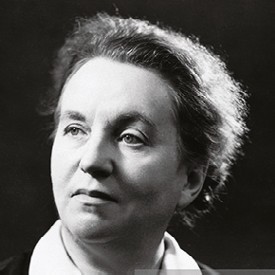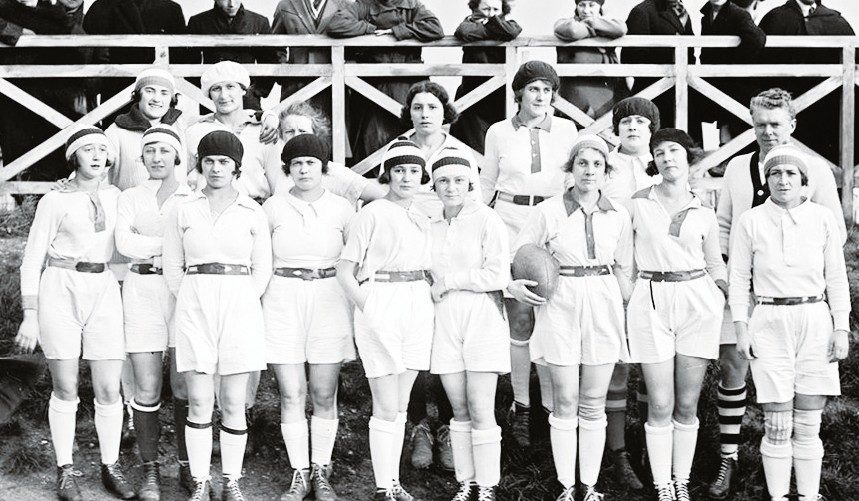

ONEof the few countries to see a version of women's rugby flourish between the wars was France where Dr Marie Houdre – a noted feminist and health specialist – helped morph the game of Barette into rugby.
Women's Barette started in France towards the end of the 19th century as a hybrid 12-a-side touch rugby, a less violent version of the Men's game that was evolving elsewhere. Smaller pitch, no tackling and you had to pass if an opponent managed to touch the ball. No scrums, simple restarts when the ball went into touch.
After World War 1 though, with the likes of Houdre to the fore, some French women wanted a much more physically demanding version of the game. It would largely stay as 12-a-side but tackling below the waist would be allowed along with scrums and lineouts and general melees and tussles for the ball.
Houdre was clearly a formidable lady, a committed socialist and feminist, but also a much respected educationalist and then doctor of medicine and finally, at the age of 37, a convert to Barette. For her the game was both a physical liberation and a statement of her independence as a woman to play whatever game she wished in the manner that men were allowed to play.
In devising the new version of Barrette she worked closely with André Theuriet, a former France scrum-half and Olympic swimmer, who was similarly convinced of the health-giving properties of rugby for young women.
Houdre first encountered the game when working at a sanatorium in Polemuer where she created a women's sport section and on moving to the capital she quickly joined the Femina Sports Club of Paris – a noted all female club offering facilities for all the main sports.
After an exhibition match in 1922, Barette grew in popularity and Houdre started to captain her own team, the Hirondelles (Swallows) and coach two of the sides at the Femina Sports Club. Tough and feisty, she more than held her own against much younger opponents and soon a nationwide tournament had been formed with teams in Lille, Toulouse, Bordeaux and a number of clubs in Paris.
The game was particularly popular at Medicine schools where high-spirited and independentminded women acknowledged no barriers in what they could and could not do. Briefly it enjoyed some popularity but not in all quarters. France's Wimbledon champion Suzanne Lenglen, a fellow member of the Femina Sports Club was not impressed: “Women's rugby is not aesthetic, and I'm opposed to this new fashion,” she stated.
Initially French clubs were happy for the Barette games to be played as curtain raisers for their games – it helped the gate among other things – but officially such a practice was banned by the French Federation from 1923 onwards. Undaunted that didn't stop a game of Barette kicking off a day of Festivities at the Parc des Prince in 1928 when the French Army played a Paris XV.
The game's days were numbered, however, the French Federation were determined to stamp out ‘women's rugby' and by the early 30s the game ceased to exist.
Barette and Houdre's influence were not forgotten, though. In 2019 the French Federation unveiled her as the first name on their women's wall of fame.
“Throughout the century, Marie Houdré, a pioneer, tried to create gaps,” said Serge Simon who did the honours for the French Federation. “They closed for Marie Houdré. It has clashed with public opinion and rugby authorities and it wasn't until the 1960s that women's practice was finally accepted.
“It is thanks to these women that women's rugby is now finally on the right track. She perfectly embodies the image of all those women who fought in the shadows for their love of the game.”
Simon's reference to it being the 1960s before women's rugby returned in any recognisable form is correct and again it was a group of determined women medics, in Limoges this time.
They organised a high profile game – which warranted a full spread in Paris Match – in December 1966 refereed by local hero Amadee Domenech, the legendary Brive and France prop who had just retired.
Dr Houdre would have been proud of them and it was from that reboot that Women's rugby in France finally started to re-establish itself.
The Paris Rules of Barrette at the end of the 19th century
• The ‘barette' was an ovoid-shaped inflated bladder some 30cm long and 20cm wide covered in a heavy leather sheath
• Ideally the pitch was 60m x 50m
• In the middle of the two short sides there was a threemetre- wide (9.8ft) goal with posts at least 4m high, and a tape or cross bar 3m above the ground.
• The aim of the game was to score a goal by first dropkicking the ball over the tape or bar and then touching it down. Failing that a ‘winning advantage' could be scored by touching the ball down anywhere behind the goal line, which would result in a free kick at goal.
• If a defending player touched the ball down they were awarded a free kick 25m from the line.
• The barette could not be thrown or punched forward, though it could be kicked or carried in the hands.
• At the kick-off, the opposing team had to be 10m from the ball, and the ball had to remain in the field from the kick.
• The ball carrier could be blocked, but the aim of the defending team was to touch the ball – when they would call ‘touch' or ‘hit'.
• This would result in a ‘scrum' – a circle of players ‘into which the barette is dropped so that it rolls on the ground'. The scrum would then kick the ball until it emerged.
• All players had to be between the ball and their own goal line – the penalty being a free kick.



























